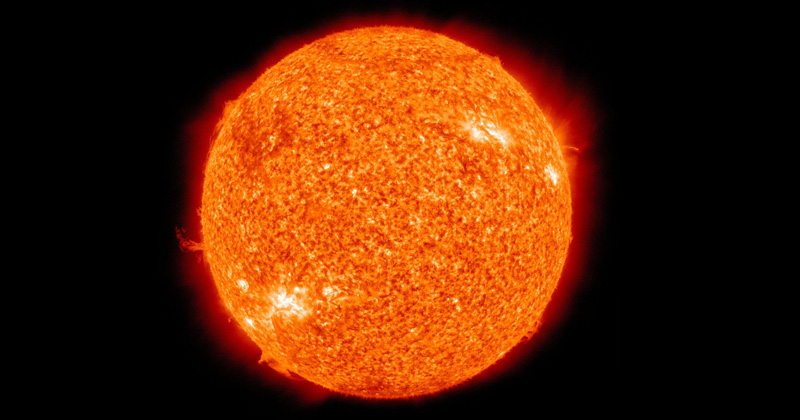We all painted pictures of the sun as a child. It was a round ball with a smiling face, surrounded by rays of light? What colour was the sun in your pictures? If the answer is yellow, you might be wrong your whole life. So if it is not yellow, what is the color of the sun?

The sun is not yellow or golden, but white. Sunlight can even be the definition of white. What colour is a white sheet of paper when you look at it in the midday sun? White. What colour are heap clouds on a sunny afternoon? White. If the sun were yellow, clouds or the snow in winter would also be yellow.
So what makes the sun yellow? Let’s start at the beginning.
Sunlight contains photons, which are light particles of all wavelengths and therefore of all colours. However, not all photons occur equally and also not all colours. Blue-violet and red are less common, and green is the most common. Still, we don’t see the sun green.
It is because green is roughly in the middle of the perceptible colour spectrum. There are therefore plenty of photons with shorter and longer wavelengths in sunlight. These colours mix with each other and the mixture of all colours from red to purple results in white.
Before we see sunlight, it has to go through the earth’s atmosphere. The photons collide with the molecules of the air in the earth’s atmosphere and change their direction of movement.
This phenomenon is called the Scattering. The collision probability is not the same for all photons. It increases with the shorter wavelength light particles, and hence blue photons are scattered most often and red ones least.
Suggested Read: Where Does The Sun Get Its Energy From?

When sunlight finally reaches our eyes, it has travelled a more or less long way through the atmosphere depending on the position of the sun. A large part of the blue photons was scattered away.
The scattered blue sunlight ensures that the sky appears blue. And since this blue light is now missing from the actual sunlight, its colour shifts a little to longer wavelengths lightwave, I.e. yellow.
It is correct, but not complete because the proportion of scattered light is not very large as long as the sun is high in the sky.
It would be best if you saw the sun yourself to know what is the color of the sun, literally, like in the sense of looking directly. As long as it is high in the sky at lunchtime, it is absolutely not advisable to look directly into the sun. It is too bright, which means that for most of the day we cannot even know what colour the sun is as we cannot look at it in the face at all.
Only when it is the late afternoon (or early morning), its light is sufficiently weakened by the effects of the earth’s atmosphere can we take a quick look. Then the scatter has already disposed of a more substantial part of the blue light, and the sun actually looks yellow. If it is very low above the horizon, its colour even changes to red-orange.
Suggested Read: How Much Gold Is There In The Sun?
Conclusion: Here we have the answer to what is the color of the sun. The paradox of the yellow sun is an effect of light scattering in the earth’s atmosphere. It robs the sunlight of a part of its blue colour and shifts its colour focus from white to yellow. But it also has a lot to do with the fact that we can only look at the sun when it is low enough on the horizon, where the colour can be seen.
As long as the sun is high in the sky, it shines white and usually much too bright to look at directly.


